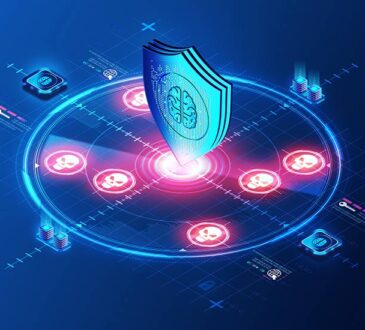
In the ever-evolving software economy, the demand for innovation has increased drastically. The pressure to gain a competitive edge, comply with regulatory frameworks, and protect against cyber attacks is an ongoing struggle for companies involved in software release management.
Simultaneously, companies need to satisfy a user base demanding regular, flawless feature rollouts. In addition, you can’t ignore the need to streamline staff and manage budgets while ensuring alignment of your operations with business objectives.
Do you feel like you are juggling a plethora of things simultaneously without dropping the ball? Well, welcome to the modern software delivery world. Adopting modern software development and delivery capabilities allows you to manage all this without the entire process collapsing.
Let’s delve into the guide to understand modern software delivery and the features your SDLC (software delivery life cycle) needs to reach your modernisation goals.
What is Software Delivery?
Software delivery is the process of creating digital products like computer programs, mobile applications, and websites.
It involves software release management, integration, writing code, software testing, designing user-friendly experiences, and releasing software in the market.
With software delivery, companies ensure that their digital products are easy to access and use in a way that makes sense.
Significance of Modern Software Delivery in Modern Business
Modern software delivery has become crucial for businesses as it helps them run things smoothly. Modern software delivery allows you to leverage computer systems, advanced processes, and tools to make software release tasks more manageable.
For instance, you can use a software system to track customer orders and inventory or an API testing tool to test APIs automatically.
Modern software delivery can help increase workplace efficiency by ensuring every software development team member can access the right tools. As a result, enterprises can stay competitive while providing the best user experience.
Essential Features of a Modern Software Delivery
The following discussed are some key features that your release management process needs to achieve your modernisation goals:
Agile methodology
Agile methodology enables people to work together on software development projects. Using it throughout the software delivery process ensures that each development team member has the same goals and works together to achieve them.
In addition, it will emphasise collaboration with different software development teams, from operations to testing teams, continuous improvement, and customer feedback.
Agile methodology will help team members become more organised and efficient enough to complete things correctly.
When considering implementing an agile methodology in software delivery, follow these best practices:
- Ensure every software development team member understands the project’s goals and objectives.
- Establish roles, assign responsibilities to each member, and communicate regularly to track progress.
- Focus on customer feedback and add critical features for end users accordingly.
- Use automation tools to speed up the application delivery process.
Centralised visibility and control
Your software delivery cycle is a complex machine involving various moving parts that can quickly go out of control or grind to a halt.
Your company’s goal should be to ensure every moving part in the SDLC works smoothly without spinning out of control to benefit your business objectives.
Continuous integration and continuous delivery (CI/CD)
Modern software development teams are now embracing CI/CD as the best approach to implement automation across the software delivery life cycle.
The first pillar, i.e., continuous integration (CI), is about committing verified code changes and integrating them with the application to limit the risk of conflicts. It helps the development team ensure that the code is working correctly and as part of the software.
The second pillar, i.e., continuous delivery (CD), is all about automatically and continuously verifying that code is vetted and approved for release. It further ensures that all the latest features of the application are production-ready.
Building a CI/CD strategy that connects application engineering teams to the stakeholders approving their changes is critical to improving trust and coordination between groups.
In addition, it also increases the velocity at which new and exciting features can be rolled out for end customers.
DevOps
DevOps is a modern approach to developing and delivering software. With it, you can combine the speed and agility of agile methodologies with traditional systems’ robustness.
Moreover, DevOps can make it easier for the software development team to coordinate and work efficiently.
Leveraging DevOps services and solutions, you can streamline the software delivery process via continuous integration, automated testing, version control systems, and configuration management.
It will combine two vital parts of the software development process, i.e., development and operations.
Application development involves adding new features and updates to the applications. In contrast, operations are about maintaining and supporting existing features. Adopting DevOps can help these two teams work together and fasten the release of new software.
Release orchestration
Advanced CI/CD pipelines can sometimes be intricate, especially if your organisation is involved in many test and release stages. In such a case, your modern software release management will need more than a solid CI/CD strategy. It’s when release orchestration can come to help.
Release orchestration glues CI and CD together while bringing empathy from a business point of view to all individual pieces of the software development process.
When done correctly, release orchestration can aid IT enterprises in managing release pipelines and dependencies across all teams and DevOps environments. It enables Ops to safely and predictably release new software while adapting to change.
Continuous governance
Governance is about bringing a set of rules and a framework to enforce those rules to your software delivery life cycle.
With continuous governance, you can ensure all steps are performed as intended by mapping out end-to-end software release processes. Furthermore, you can automate evidence collection to rapidly generate audit reports by orchestrating your software development cycle.
To wrap up it all
Software delivery can significantly affect how people use computers and other devices. However, software delivery has become more complicated with the ever-evolving software economy.
Improving software delivery is a never-ending journey, and you can make this journey hassle-free by adopting a modern release management process. Implementing all the above-discussed features in your software delivery life cycle (SDLC) can help your organisation achieve modernisation goals and quickly and efficiently roll out advanced applications.





